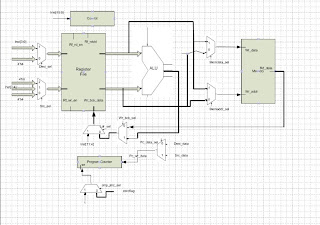SID: 0052899776
Headquarters effect for Samsung and Motorola
When an entrepreneur plans to start up a business, one has to decide where to locate the headquarters in order to coordinate the business in the most efficient way. Location is even more important in global firms because countries vary significantly in various aspects. Within the different factors to consider, economy, political policy and factors of production matters the most. I will choose the mobile industry’s two of the leaders, Motorola and Samsung, as an analysis.
Samsung electronics was founded in 1969 and it’s headquarter is in Seoul, South Korea. The headquarter was originally in South Korea obviously because the founder, Lee Byung-chul was a Korean. Moreover, Samsung electronics was originally manufacturing electronic appliances such as TVs, calculators, refrigerators, air conditioners and washers. Business was mainly local with design and manufacture all in South Korea, it was an obvious plan to place the headquarter there.
As Samsung Electronics merged with Samsung Semiconductor & Communications in 1988, their business started to expand to telecommunication network and semiconductor such as storage device and hard disk drive. Since then they started to become a global industry with headquarter in South Korea and sites world wide.
After the World War II and the Cold War, Korea was divided into South Korea and North Korea with South Korea backing up by the United States and the United Kingdom. Being in a capitalistic system, South Korea encourages free trade and investment, and businesses are owned by individuals instead of the government. Hence, under this capitalist political system, together with the moderate corporate tax rate, a lot of businesses are attracted to establish in South Korea. These steadily build up the prosperous side of South Korea, leading them to be one of the wealthiest countries in Asia.
With the capitalist economy, building headquarters in South Korea has an advantage over other countries in terms of the factors of production and supporting industry. First, the most important asset for a high technology industry is knowledgeable employee and research development. Since South Korea is open to investment, high technology companies are willing to put money into long term training for engineers. Moreover, South Korea has a strong focus on education, where they have the world’s highest estimated national IQ and they also ranked first in mathematics and science. With the pool of talent, establishing headquarters in Seoul guaranteed the future in human resources, which is a smart move for Samsung.
In addition to the education advantage, South Korea’s political economy also attracted other high technology business. In fact, South Korea was one of the leading country in technology. With the presence of related industries, ideas and innovation can flow around easily. For example, with more people interested in developing new mobile technology standards, conference can always be established to facilitate the discussions. Seoul is the Silicon Valley in Korea with a high concentration of technology companies.
With Seoul’s attractive business environment, it also stimulated the urbanization of South Korea. With a fast growing population of more than 2% a year, it has already emerged as a new megacity with 10 million in population. Together with the economic growth, South Korea and Seoul will be a good place for the headquarter of Samsung for years to come.
In the mobile industry, Motorola is another leader. Motorola is headquartered in the United States, Illinois. In terms of country’s policy, United States has been the most capitalistic country over the world.
However, in terms of location, Motorola’s headquarter does not have much benefit over the factors of production. Since United States is a huge land, different locations have their own advantage in a specific industry. For example, the west coast is technology focused with Silicon Valley a lot of research institute in place, while on the east coast it is packed with famous colleges and other non-tech enterprises. When Motorola places it's headquarter in Illinois, although it is convenient for them to recruit top talents in business area from schools such as Harvard, they are isolated from the main high-tech area, which is either in Silicon Valley or Texas, Austin. I think this will be a hard situation for them because in mobile design, designers have to communicate with industry very well to make sure industry standards such as bandwidth and spectrum requirements are met and so on. With headquarters locating thousands of miles away, it is not efficient to carry out the design. Moreover, travelling consumes valuable energy on earth, which makes both the world and the company less sustainable.
Even though location of the headquarter seems to have a big effect towards the operation of the company, I expect in the future 5-10 years, this effect will get smaller. The greatest impact in the future to global business would be government policy. Besides allowing free market economy, even more investments will come if the government give subsides or other stimulating policies. Another important factor would be nation's economy and strength of currencies. Although economic strength encourages companies to setup businesses, but strong currencies mean a higher price for costs of production factors, so there must be a balance between the two.
As far as distance is concerned, technological advancement will bring the already flat world even flatter. Telecommunication network made by both Samsung and Motorola and other enterprise brings the world closer together than ever. A lot of discussions and supervision work can be down using teleconference video technology and gigabits ethernet. Even if hands-on training is necessary, web simulation is able to provide users with training anytime and anywhere. Hence, in the future, the location of headquarter should be less affected by the distance with supporting industry.


